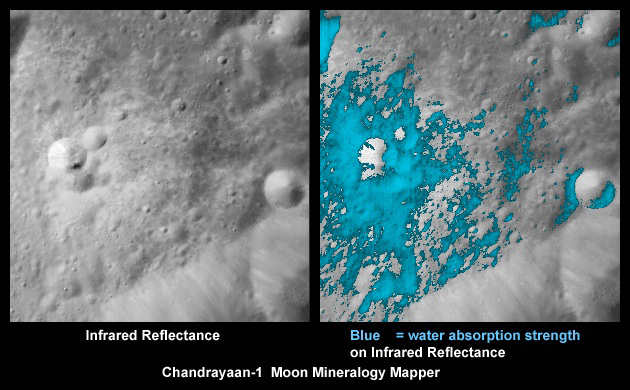Lunar missions have provided evidence that there is water on the moon, and that it is distributed across the surface, not just confined in one area. These findings indicate that water is always present on the moon no matter the time or day, and that it also appears to be around all the time.
Joshua Bandfield, from the Space Science Institute in Boulder, Colorado and one of the authors of the study on the matter, said, “We incorporate a physics-based thermal correction into analysis of reflectance spectra from the Moon Mineralogy Mapper and find that prominent absorption features consistent with OH/H2O can be present at all latitudes, local times and surface types examined.”
This suggests the widespread presence of OH/H2O on the lunar surface without significant diurnal migration,
Bandfield added.
If there really is enough water on the moon that can be accessed by anyone on it, lunar mission crew members might be able to use it as drinking water, or even convert it to oxygen for breathing. The water can also be turned into hydrogen to fuel rockets, Tech Times reports.
However, these findings suggest that the water on the moon may not be the same as the water on Earth. It might be difficult to get to, as well. Lunar water doesn’t appear to be made of the same two atoms of hydrogen and one atom of oxygen, like water on this planet. Water on the moon seems to exist more as a reactive relative called hydroxyl, or HO. Since this substance is more reactive, lunar water makes chemicals bond quickly, and attaches to other molecule.
Since this is the case, the water will need to be extracted from minerals on the moon before it can be used. Michael Poston, from the Southwest Research Institute in San Antonio, Texas, said, “Water on the Moon is of intense interest for many reasons. When you split water molecules, you end up with oxygen and hydrogen, critical components for breathable air and rocket fuel. Hydroxyl (OH) is a more reactive relative to water and not as attractive as water in terms of supporting a lunar station.”
The study was published in Nature Geoscience.
























